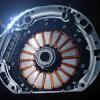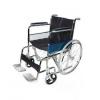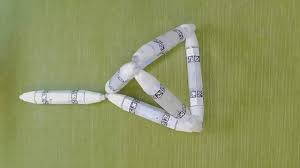
Breaking News
 "World's most power dense" electric motor obliterates the field
"World's most power dense" electric motor obliterates the field
 Robot metabolism: The next evolution of our overlords?
Robot metabolism: The next evolution of our overlords?
 Trump's $1 trillion AI data center boom strains Texas grid -- nuclear power eyed as solution
Trump's $1 trillion AI data center boom strains Texas grid -- nuclear power eyed as solution
 OpenAI ChatGPT Agent for Tool Use, Shopping and Other Activity
OpenAI ChatGPT Agent for Tool Use, Shopping and Other Activity
Top Tech News
 The Wearables Trap: How the Government Plans to Monitor, Score, and Control You
The Wearables Trap: How the Government Plans to Monitor, Score, and Control You
 The Streetwing: a flying car for true adventure seekers
The Streetwing: a flying car for true adventure seekers
Magic mushrooms may hold the secret to longevity: Psilocybin extends lifespan by 57%...
 Unitree G1 vs Boston Dynamics Atlas vs Optimus Gen 2 Robot– Who Wins?
Unitree G1 vs Boston Dynamics Atlas vs Optimus Gen 2 Robot– Who Wins?
 LFP Battery Fire Safety: What You NEED to Know
LFP Battery Fire Safety: What You NEED to Know
 Final Summer Solar Panel Test: Bifacial Optimization. Save Money w/ These Results!
Final Summer Solar Panel Test: Bifacial Optimization. Save Money w/ These Results!
 MEDICAL MIRACLE IN JAPAN: Paralyzed Man Stands Again After Revolutionary Stem Cell Treatment!
MEDICAL MIRACLE IN JAPAN: Paralyzed Man Stands Again After Revolutionary Stem Cell Treatment!
 Insulator Becomes Conducting Semiconductor And Could Make Superelastic Silicone Solar Panels
Insulator Becomes Conducting Semiconductor And Could Make Superelastic Silicone Solar Panels
 Slate Truck's Under $20,000 Price Tag Just Became A Political Casualty
Slate Truck's Under $20,000 Price Tag Just Became A Political Casualty
 Wisdom Teeth Contain Unique Stem Cell That Can Form Cartilage, Neurons, and Heart Tissue
Wisdom Teeth Contain Unique Stem Cell That Can Form Cartilage, Neurons, and Heart Tissue
Robot metabolism: The next evolution of our overlords?

At the moment, the robots in question are called Truss Link, which are basically bar-shaped modules with magnets at each end that resemble Geomag building toys. The modules can expand and contract, roll around, and link up with each other by linking up their magnets. So we're not talking about sophisticated robo-soldier assembly lines just yet. Still, the proof-of-concept work by researchers out of Columbia University is another step toward making robots more self-sufficient than they currently are.
"True autonomy means robots must not only think for themselves but also physically sustain themselves," says Philippe Martin Wyder, lead author of a study detailing the work published in Science Advances. "Just as biological life absorbs and integrates resources, these robots grow, adapt, and repair using materials from their environment or from other robots."
As you can see in the following video, the researchers showed that these stick robots were able to morph from two-dimensional to three-dimensional through cooperative action. At one point, the robot assembly picks up another module, which it uses as a kind of walking stick. This, say the researchers, allowed it to increase its downhill speed by over 66%.
Perhaps the most "uh-oh humans might be in trouble" moment in the video comes when one set of robots is seen helping another change shape. There's also a clip in which one group of robots jettisons a module with a dead battery before picking up a working one.
"Robot minds have moved forward by leaps and bounds in the past decade through machine learning, but robot bodies are still monolithic, unadaptive, and unrecyclable," says study co-author Hod Lipson. "Biological bodies, in contrast, are all about adaptation - lifeforms can grow, heal, and adapt. In large part, this ability stems from the modular nature of biology that can use and reuse modules (amino acids) from other lifeforms. Ultimately, we'll have to get robots to do the same - to learn to use and reuse parts from other robots."
In addition to creating the bots, the researchers also created their own laws of robot metabolism, which echoes Asimov's Three Laws of Robotics just a little.
"First," they write, "robot metabolism cannot rely on active physical support from any external system to accomplish its growth; the robot must grow using only its own abilities. The only external assistance allowed is that which comes from other robots made of the same components. Second, the only external provision to robot metabolism is energy and material in the form of robots or robot parts. No new types of external components can be provided."



